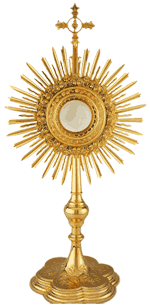Tuesday, February 2
The Feast of the Presentation of the Lord commemorates the purification of the Blessed Virgin Mary and the presentation of Christ in the temple, which took place 40 days after his birth as Jewish law required. According to Mosaic law, a mother who had given birth to a boy was considered unclean for seven days. Also, she was to remain 33 days “in the blood of her purification.” Luke tells us, quoting Exodus 13:2,12, that Mary and Joseph took Jesus to Jerusalem because every firstborn child was to be dedicated to the Lord. They also went to sacrifice a pair of doves or two young pigeons, showing that Mary and Joseph were poor. Once in the temple, Jesus was purified by the prayer of Simeon, in the presence of Anna the prophetess. Simeon, upon seeing the Messiah, gave thanks to the Lord, singing a hymn now called the Nunc Dimittis:
Lord, now you let your servant go in peace,
your word has been fulfilled:
My own eyes have seen the salvation,
which you have prepared in the sight of every people:
a light to reveal you to the nations
and the glory of your people Israel.
Simeon told Mary, “Behold, this child is set for the fall and rising of many in Israel, and for a sign that is spoken against, (and a sword will pierce through your own soul also), that thoughts out of many hearts may be revealed.” Simeon thus foreshadowed the crucifixion and the sorrows of Mary at seeing the death of her Son.
The name Candlemas (“Candle Mass”) comes from the activities associated with the feast. In the Western Church, a procession with lighted candles was popular, and beeswax candles are blessed and may be saved for later use in your home. After an antiphon, during which the candles held by the people may be lighted, there is a procession into the church which commemorates Christ’s entrance into the temple. Since Vatican II, the feast is officially designated “The Presentation of the Lord.”




